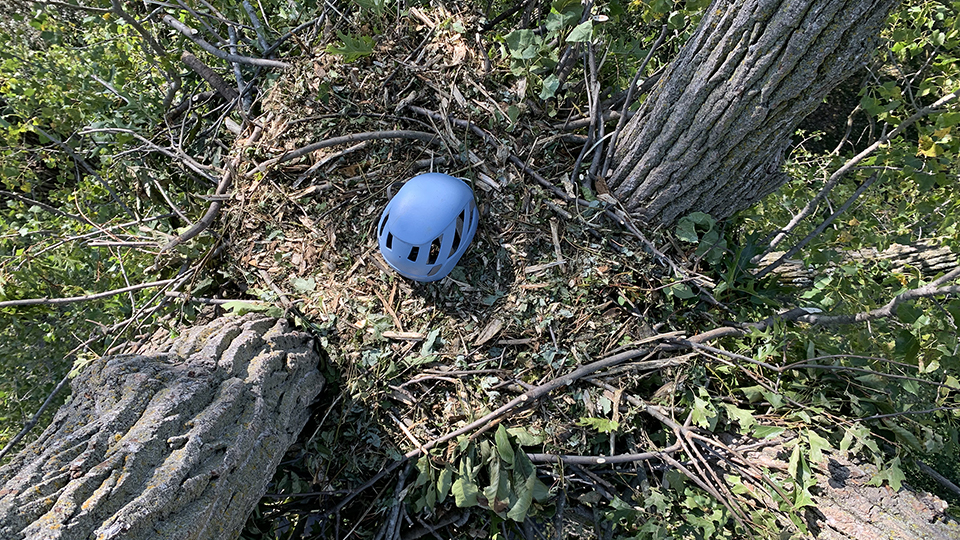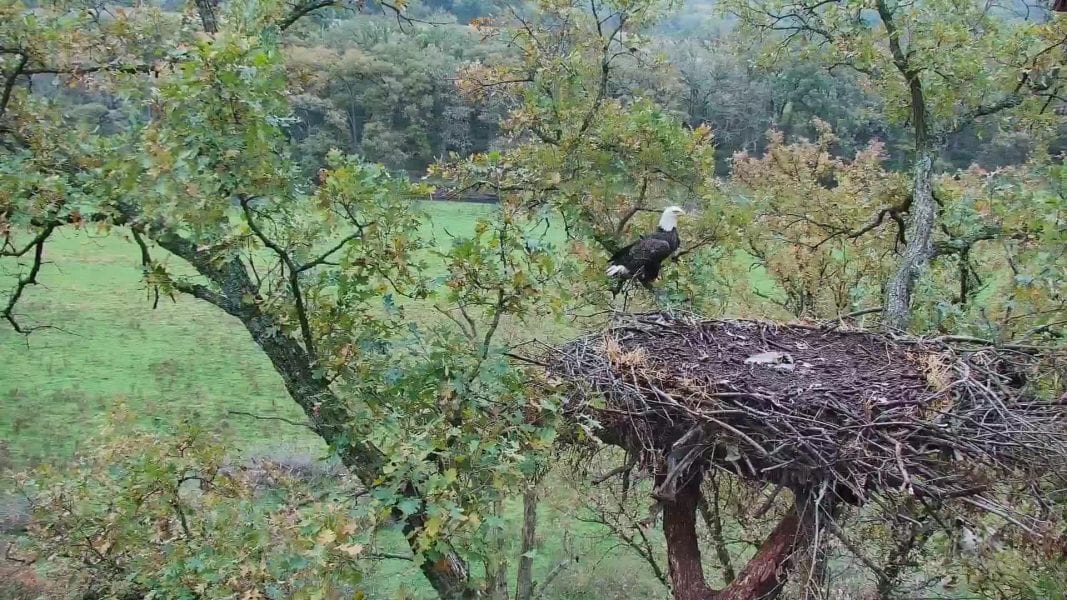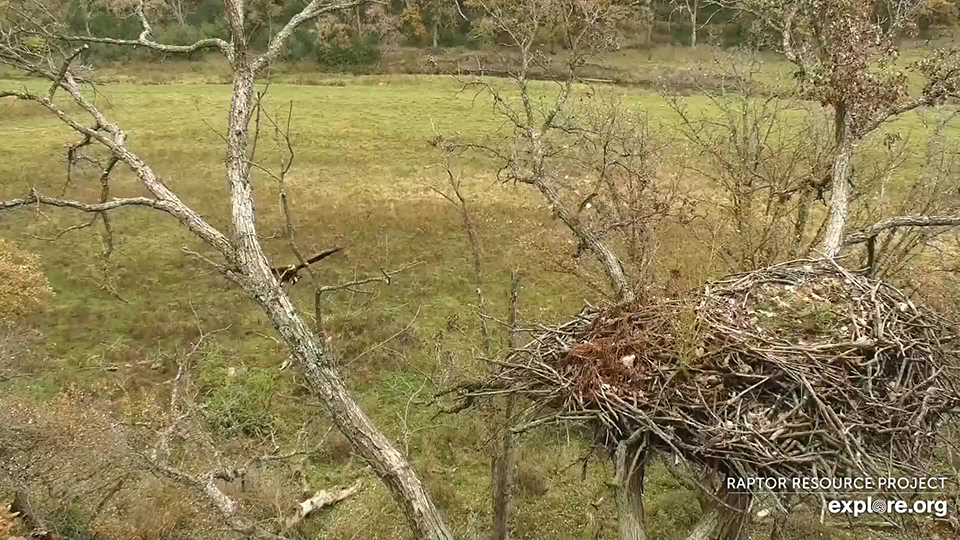We’re almost at the end of October and our eagles are getting busy! HD and HM have been in full-speed ahead mode since early October, alternating straight sticks, wonky sticks, and piles of fluff as they build out their new home. It might seem early to start bringing in grass, but the subfloor needs a lot of prep before egg cup construction starts. Digging creates a soft, low spot that drains water, layers of material insulate the eggs and help protect them from damage, and scraping and rolling molds nest materials to fit their contours. A well-constructed nest bowl will keep eggs and eaglets snug through snowy winters and wet springs!
How big is an eagle’s nest?
We didn’t visit either nest this year, so we don’t have an exact measurement. But bald eagle nests in general tend to be around four to seven feet wide and three to six feet high.
- In 2021, the North nest was about 7.25 in diameter. We can’t really get a height on it, since we can’t get anywhere near the bottom and the nest slopes downward from the top. Our best guess is six feet high at its tallest measure.
- We rebuilt N1 in 2021. At the time, it was 3.5′ in diameter and about two feet deep. We don’t know how big it is now.
How much does an eagle’s nest weigh?
We haven’t been able to weight the nests, but I can do some rough back-of-the envelope calculations that should come close. We’ll start by pretending that both nests are a neat cone shape. The formula for calculating the volume of a cone is (1/3) * (π * r² * h). So, (13′ (r²) * 3.1415 (π ) * 6′) * .333 yields about 81 cubic feet for the North nest, while (3′ (r²) * 3.1415 (π ) * 2′) * .333 yields about 6.1 cubic feet for N1. I’m guessing it’s bigger now!
Now that we have our volume, we need to think about what the nest is made out of. DNN is in an oak tree, in a neighborhood with many other oak trees, while N1 is built primarily of cottonwood and maple. Dry cottonwood weighs about 18 pounds per cubic foot, dry oak weighs about 27 pounds per cubic foot, and dry maple weighs about 21 pounds per cubic foot. 81 cubic feet * 27 pounds yields 2,187 pounds for DNN, while 6.1 cubic feet * 19.5 (averaging oak and maple) yields about 188 pounds for N1. But wait, there’s more!
Fibonacci numbers
Bald eagles loosely weave branches together to create their nests, which means our wooden cone has gaps and spaces. I cast around for a way to calculate this unmeasurable space and decided to use the Fibonacci ratio of 61.8%. The Fibonacci sequence turns up quite a bit in natural series, especially ones that involve spirals. Here’s just one example: https://theconversation.com/why-do-cauliflowers-look-so-odd-weve-cracked-the-maths-behind-their-fractal-shape-164121.
Each term in a Fibonacci sequence is the sum of the two preceding terms. The key Fibonacci ratio of 61.8% is found by dividing one number in the series by the number that follows it. I don’t have a string of numbers to describe the nest, but the sequence is common enough in spirals that I decided to multiply our total weight to derive an estimated weight that included empty spaces. With that in mind:
- DNN weighs about 1,351 pounds
- N1 weighs about 116 pounds – or did when we finished building it last year!
Keep in mind that any given nest’s weight can change as nest material composts, sticks shed, a heavy rain soaks the nest with water, or a prolonged drought dries the nest out. Eagles replenish active nests with sticks, but inactive nests dwindle pretty quickly, especially in humid areas. Our nests also aren’t perfect cones, which could make them a little lighter or a little heavier than our estimates.
Take a look at the pictures below and you’ll see the difference!

N1 after we finished the rebuild in the fall of 2021
HD and HM have been busy!

An adult bald eagle – probably DNF – near the North nest in October of 2018

October 23, 2022: DNN four years after our rebuild
 The Raptor Resource Project
The Raptor Resource Project The Raptor Resource Project
The Raptor Resource Project